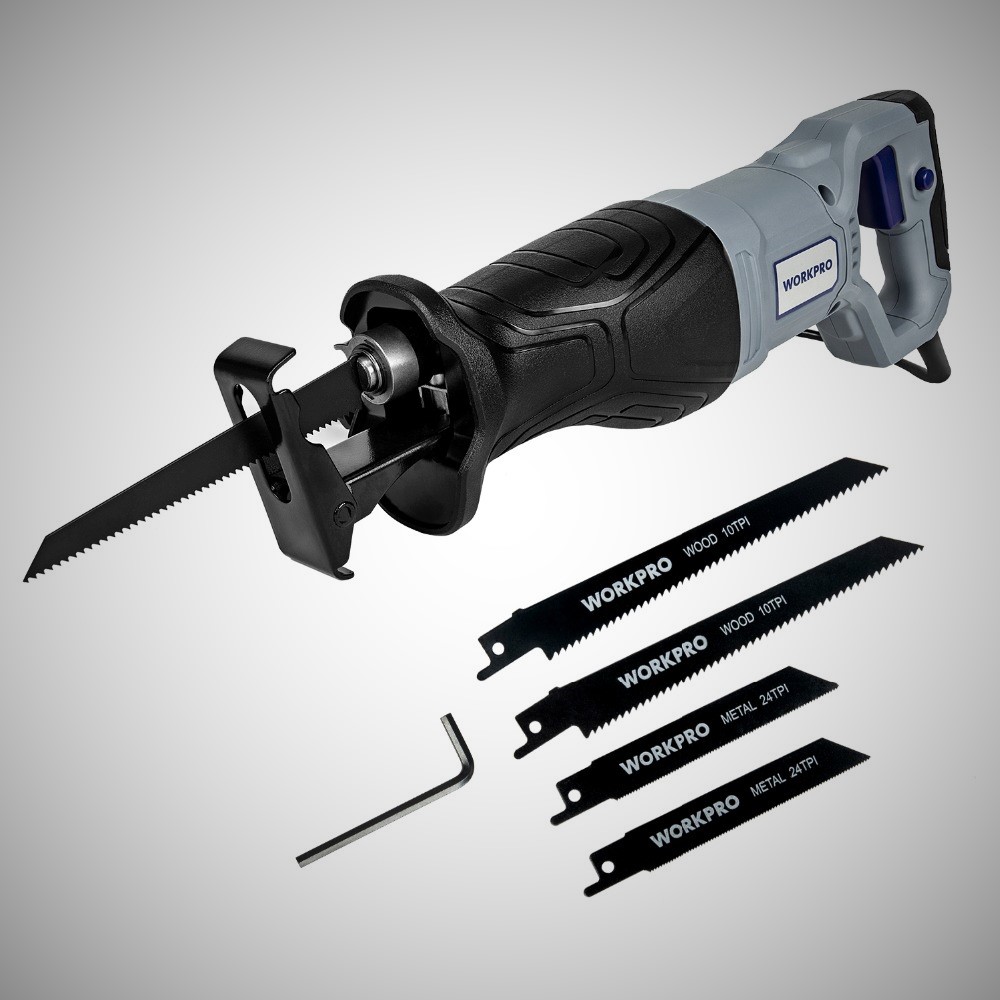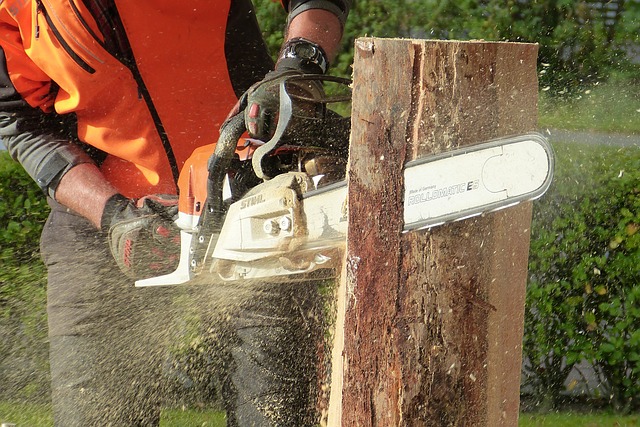
¿How to sharpen chainsaw? The sweet blade of the chainsaw will make the wood burn and crumble, and this is a slow and dangerous method of cutting. sawVerge.Com Here are some tips on how to use a sharpener from the Bob Tacke specialist on the family handyman:
Before learn ¿How to sharpen chainsaw? You’ll need something: a pair of gloves and an outdoor power machine stores filing kit made for chainsaws.
Tap the chain brake and twist the bar tightly into a grip.
Put the guide on the chain between the rivets and the arrows in the guide to the nose of the pole.
Follow the angle of the cutter on the top plate; you don’t go to the lateral plate too deeply with the guide-rollers.
Using smooth, even file strokes – 2 or 3 strokes until the cutter ‘s face is bright red.
Remove the chain brake and turn the chain to the front, after sharpening a few cutters, to expose more cutters to sharpen. Put the brake back again.
Once the cutter on the one end of the chain is finished, turn the chain seam around so that the cutters on the other side of the chain can be sharpened.
To set the height of depth gages in the chain, use the tool and file. The cutters can’t touch the wood when the depth gauges are too small.
Replace your chainsaw with fuel any time you fill it up.
Keep your chain out of the dirt or it’s going to get dull fast.
Sharpening a chainsaw isn’t scary
The hazy cutters of a chainsaw can frighten you into not sharpening the saw yourself. But in only 10 minutes, you can turn your slow-cutting chainsaw into a firewood-cutting ninja with the aid of a few cost effective files and guides. Right on the screw and right through the wood you are cutting you will sharpen the thread. Do that frequently, and you will get years of sharp chain life. We’ll teach you here how to use sharpeners for chain sawing.

When to sharpen
A sharp chain cuts very well on the rope, while an awkward chain tends to ride without furthering. The chain is very strong. The chain is rusty and needs to be sharpened if you use a saw to cut it. Also, it is time to collect a round file and sharpen the cutters when the chain spills dust rather than chips (Photo1). A dull chain is risky – the chances of a kickback are significantly increased. The chain will trap the material and move the bar towards the operator more likely. (For more information, see Using Chain Saw Safely).
Chain anatomy
¿How to sharpen chainsaw? For sharpening, using a circular file with the same width, which is the same width (Photos 2 and 3). The chain cutters have semi-curved cuts. A “deep gauge,” a metal piece shaped like a shark fine, is in front of each cutter. The deepness gage tip of the cutter ‘s hair is shorter than its tip and tests the depth of the cutter. The cutters can be level with the depth gauges after repeated sharpening – and the saw can not be cut. The depth measurements with a flat file and a computer guide can be quickly lowered to the correct height (Foto 6).
Tools for sharpening
A circular file with a diameter corresponding to the cutter (Figure 3). 5/32, 3/16 and 7/32 in popular diameters for average chainsaws. Please check your owner’s manual for the requirements of the saw or use the stamped drive link chain identification number (photo 2). Computer storage and small engine dealers have charts to fit the appropriate file diameter with this figure.
Caution: Do not use as a chainsaw sharpener a standard rattail file. Your chain cutters will ruin your conical diameter and coarse teeth
A reference to a computer. It contains the ring file at an even depth when each cutter is sharpened.
A flat file and gauge to reset the depth gauges occasionally.
Sharpening by hand
¿How to sharpen chainsaw by hand? When you work, after sharpening every five or six cutters you will step forward on the chain. Despite this, wear gloves. However, while filing cutters, if you are working bare-handedly, you might find a better “feel” for the file-cutter contact.
Cut a 2-in. Deep kerf in log and the saw bar rests in it for sharpening to secure. Place the fiche and file guide in a cutter at the end and top of the bar and show where you began to use the chainsaw sharpener at the top of this cutter. Line the file on the cutter with the angle of factory-ground. It’s almost always 30 or 35 degrees. Most file manuals have engraved corners between 30 and 35 degrees.
Make a stroke, keep the right angle on the cutter, parallel and away from the body. You will feel the guide riding on the cutter and the depth measurement. Your hand may vibrate a little with the initial couple on a dull cutter. Allow the outer strokes of five or six, then stop. The cutter is sharp if you feel a burr along its outer edge.
The cuts on the cutters are in the opposite direction, so miss a cutter and file the next as many shots as the previous. File always so that the burr forms on the cutter ‘s external edge. After five or six cutters are sharpened, place the gloves and tighten up the chain along the bar, exposing the next batch. Then move to the other side of the saw bar and sharpen the cutter on the opposite side by using the same number of strokes per cutter once again.
Filing depth gauges
Check the thickness of the fins in front of the cuttings with the thickness measuring guide (Fig . 5). On each end, the gage is placed on the cutters and a slotted ledge lines the fin of the deep gage. File it lightly with the flat file if the fin is higher than the ledge on the Guide. Do not use additional muscles for depth gage filing, or you can put a certain ledge away from the guide and not read it properly.
Old saws on sharpening chainsaws
It is because the cutters on that side are sharper than on the other hand that your scene pulls to the side while cutting. Be a fan to filter each cutter with the same stroks and the same pressure to keep your saw cutting in a straight line.
Once the chain has to be replaced, cutters can be sharpened up to 10 times or more. A professionals will re-form the cutter in a standardized way after a few sharpenings.
If you have been on the same chain for several years, buy another, the new chain will not mesh with the pipe and bar smoothly. This will make the saw more rugged and wear quicker. “Buy two additional chains and switch between the three occasionally,” advises Bob Tacke, chain saw expert. This will ensure your sight ‘s life is extended by all of the parts of the cutting train – bar, sprockets and fetching.
File guides connecting the bar ensure that each cutter is placed under the same angle. They take a little longer to use, but they return the cutting edge to the exact factory angle, so you need to sharpen the chains fewer chances.
Required Tools for this Project
Have the necessary tools for this DIY project lined up before you start—you’ll save time and frustration.
Depth gauge guide for sharpening chain saw blades
Dremel tool
Dremel tool blade sharpening kit No. A679-02
File guide for sharpening chain saw blades
Flat file
Round file
¿How to sharpen chainsaw? Related articles: inside house